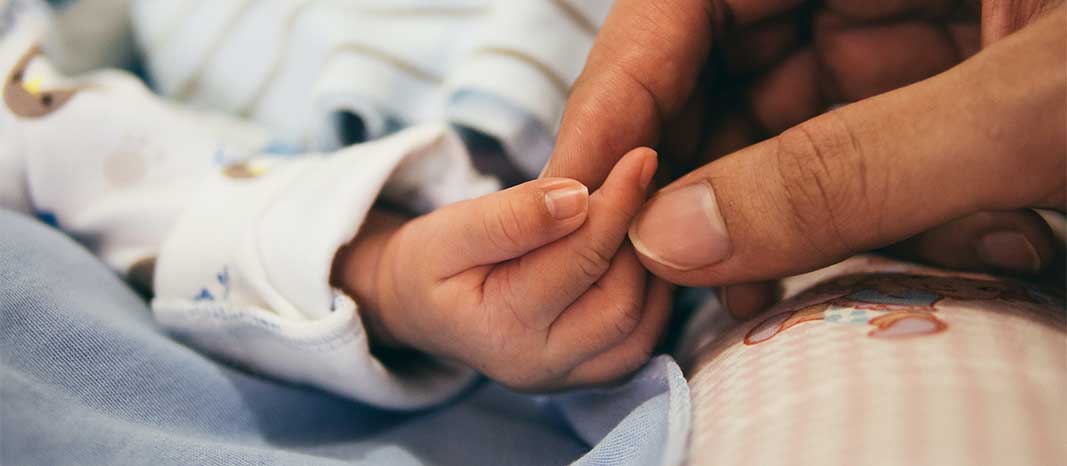You’re finally ready to begin life with your baby!
Caring for a newborn can feel overwhelming at first. Ask experts, nurses, and trusted friends or relatives for help and advice in the first days or weeks after you get home. In the meantime, these tips can also help you feel more confident about caring for a newborn.
Holding a baby
If you’re a new mother and haven’t spent a lot of time around newborns, it may feel intimidating. Here are a few basics to remember:
- Wash your hands before handling your baby. Make sure that everyone who handles your baby has clean hands. Newborns don’t have a strong immune system yet, so they can get sick easily.
- Support your baby’s head and neck.
- Make sure your baby is securely fastened into the carrier, stroller, or car seat.
- Limit any activity that could be too rough or bouncy, such as rough play, being thrown in the air, or shaking.
Bonding and soothing
Bonding happens when parents make a deep connection with their infant within the first hours and days after birth. Physical closeness can promote an emotional connection and contribute to the baby’s emotional growth, which also affects their development in other areas.
Begin bonding by cradling and gently stroking your baby. Both you and your partner can hold your newborn against your skin while feeding or cradling. If your little one is fussy, try singing, reciting nursery rhymes, or reading aloud as you gently sway or rock your baby.
Newborn sleep
Newborns can sleep 16 hours or more a day but usually only a couple of hours at a time. The digestive system of a newborn is so small that they need nourishment every few hours and should be awakened if they haven’t been fed for 2-4 hours.
Many babies will begin sleeping through the night (between 6–8 hours) at around three months of age; however, if it takes longer for them to sleep through the night, it’s not a cause for concern.
Babies should always be placed on their backs to sleep to reduce the risk of sudden infant death syndrome (SIDS). It’s also important to remove blankets, loose bedding, pillows, crib bumpers, toys, and stuffed animals from the sleeping area.
Swaddling a baby
Swaddling is a soothing technique that works well for babies for the first few weeks. Not only does swaddling keep a baby warm, but it gives newborns a sense of security and comfort.
To swaddle a baby:
- Spread out a blanket in a diamond shape and fold it over the top corner.
- Lay the baby on the blanket with their head above the folded corner.
- Wrap the left corner over the body and tuck it snuggly beneath their back, going under the right arm.
- Bring the bottom corner up over their feet and pull it toward their head, folding the fabric down if it gets close to their face.
- Wrap the right corner around the baby and tuck it under their back on the left side, leaving only the neck and head exposed.
- To make sure your baby isn’t wrapped too tightly, check to see if you can slip a hand between the blanket and their chest. This allows comfortable breathing.
Babies shouldn’t be swaddled after they’re two months old. At this age, some babies can roll over while swaddled, which increases their risk of SIDS.
Physical closeness can promote an emotional connection and contribute to the baby’s emotional growth.
Newborn feeding
Only feed your baby breast milk or formula. Giving your baby water can cause a serious problem and lowers the amount of salt in your baby’s blood.
Whether feeding your newborn by breast or bottle, it’s recommended that babies are fed whenever they seem hungry. Your baby may cue you by crying, putting fingers in his or her mouth, or making sucking noises.
A newborn needs fed every 2-3 hours, so even if you don’t see feeding cues, go ahead and try to feed the baby by the third hour. Some newborns may need to be awakened every few hours to make sure they get enough to eat.
If you’re breastfeeding, give your baby the chance to nurse about 10–15 minutes at each breast. If you’re formula feeding, your baby will most likely take about 2–3 ounces (60–90 milliliters) at each feeding.
Monitoring if your baby is getting enough to eat when breastfeeding can be tricky. If your baby seems satisfied, produces about six wet diapers and several stools a day, sleeps well, and is gaining weight regularly, then he or she is probably eating enough.
How to burp a newborn
Babies often swallow air during feedings, which makes them fussy. To help prevent this, try burping your baby every 2–3 ounces (60–90 milliliters) if you bottle-feed, and each time you switch breasts if you breastfeed.
To burp a baby, you should:
- Hold your baby upright with his or her head on your shoulder. Support the head and back while gently patting the back with your other hand.
- Sit your baby on your lap. Support the chest and head with one hand by cradling the chin in the palm of your hand and resting the heel of your hand on the chest. Use the other hand to gently pat the back.
- Lay your baby face-down on your lap. Support the head, making sure it’s higher than the chest, and gently pat or rub the back.
If your baby doesn’t burp after a few minutes, change the baby’s position and try burping for another few minutes before feeding again. Keep baby in an upright position for at least 10–15 minutes to avoid spitting up after burping.

Newborn diapers
Your little one should have six or more wet diapers and three or more poopy diapers per day.
Before diapering your baby, make sure you have all supplies within reach. If a diaper is wet or soiled, lay your baby on his or her back and remove the dirty diaper. Use wipes or a washcloth to gently wipe your baby’s genital area clean. When removing a boy’s diaper, do so carefully because exposure to the air may make him urinate. When wiping a girl, wipe her bottom from front to back to avoid a urinary tract infection (UTI). To prevent or heal a rash, apply ointment.
When you change your baby’s diaper, carefully clean the left-over umbilical cord by gently wiping it with a clean cotton-tipped swab. If your son is circumcised, put petroleum jelly in the front of your son’s diaper to prevent his penis from sticking to it. You can stop doing this after about five days when the redness from the circumcision goes away.
Always remember to wash your hands thoroughly after changing a diaper.
Baby bath
For newborns, a sponge bath one to three times a week should be sufficient. It’s recommended that you give your baby only sponge baths until the umbilical cord falls off. For circumcised baby boys, sponge baths should continue until their penis is healed.
Have these items ready before bathing your baby so you never leave him or her unattended:
- a soft, clean washcloth
- mild, unscented baby soap and shampoo
- a soft brush to stimulate the baby’s scalp
- towels or blankets
- a clean diaper
- clean clothes
Sponge bath
Select a flat surface (such as a changing table, floor, or counter) in a warm room. Fill a sink or bowl with warm—not hot—water. Undress your baby and wrap him or her in a towel.
Wipe your infant’s eyes with a washcloth (or a clean cotton ball) dampened with water only. Wipe from the inner corner to the outer corner. Repeat cleaning the other eye with a clean corner of the washcloth (or a fresh cotton ball).
Clean your baby’s nose and ears with the damp washcloth. Then wet the cloth again and, using a little soap, wash his or her face gently and pat it dry. Next, using baby shampoo, create a lather and gently wash your baby’s head and rinse.
Using a wet cloth and soap, gently wash the rest of the baby, paying special attention to creases under the arms, behind the ears, around the neck, and in the genital area. Once you have washed those areas, make sure they are dry before diapering and dressing your baby.
Baby bathtub
The first baths should be gentle and brief. If your baby becomes upset, go back to sponge baths for a week or two, then try the bath again.
In addition to the supplies listed above, add an infant tub with 2 to 3 inches of warm (not hot) water.
In a warm room, undress your baby and place him or her in the water immediately to prevent chills. Use one hand to support the head and the other hand to guide the baby into the tub.
Use a washcloth to wash his or her face and hair. Gently massage your baby’s scalp with the pads of your fingers or a soft baby hairbrush. When you rinse the soap or shampoo from your baby’s head, cup your hand across the forehead so the suds run toward the sides and soap doesn’t get into the eyes. Gently wash the rest of your baby’s body with water and a small amount of soap.
Throughout the bath, regularly pour water gently over your baby’s body so he or she doesn’t get cold. After the bath, wrap your baby in a towel immediately, making sure to cover his or her head.
While bathing your infant, never leave the baby alone. If you need to leave the bathroom, wrap the baby in a towel and take him or her with you.
Contact us
Have any questions or concerns about newborn care? Call CHM’s Maternity Support Team at 1-800-791-6225 for medical and program-related support.

CHM Maternity Guide
When you’re thinking about starting a family, considering all your options is a great first step.
Learn more about CHM’s maternity program and make sure you’re prepared by signing up to receive the Maternity Guide.




